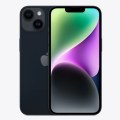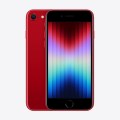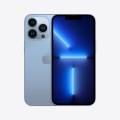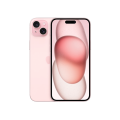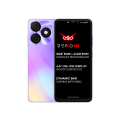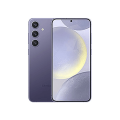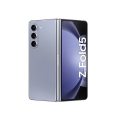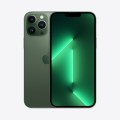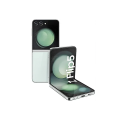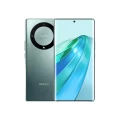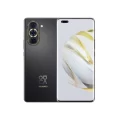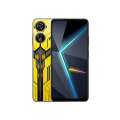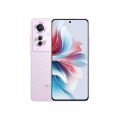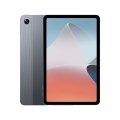- Homepage | Database
- All Products
- Mobiles & Tablets
- Apple iPhone 15 Pro
Apple iPhone 15 Pro
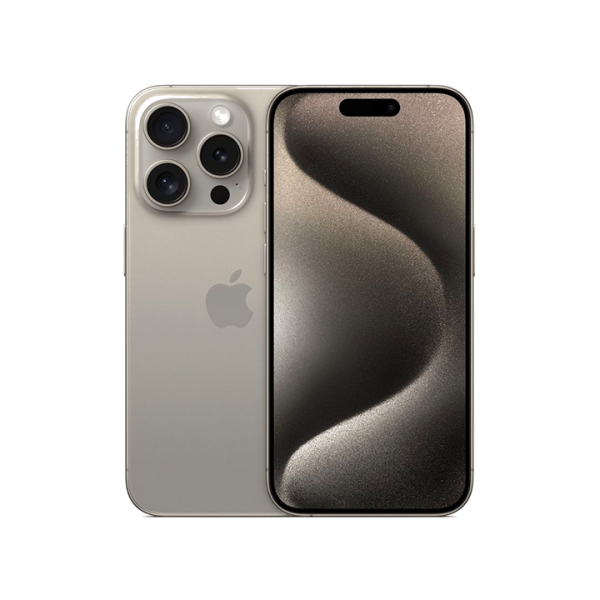


The Apple iPhone 15 Pro has been unveiled, carrying forward Apple’s legacy of delivering cutting-edge technology, aesthetic design, and performance. Here is a detailed insight into its specifications:
Display
The device sports a 6.1-inch Super Retina XDR all-screen OLED display. The screen provides a resolution of 2556 x 1179 pixels, translating to a pixel density of 460 ppi. The display boasts ProMotion technology with adaptive refresh rates of up to 120Hz. It’s designed for optimal viewing with a 2,000,000:1 contrast ratio, 1000 nits of maximum brightness under typical conditions, and peak brightness reaching 1600 nits for HDR content. When outdoors, it can achieve up to 2000 nits. Additionally, the screen offers True Tone, Wide Color (P3), and HDR display capabilities. The oleophobic coating ensures it remains free from fingerprints.
Performance
Powering the iPhone 15 Pro is the A17 Pro chip, encompassing a 6-core CPU, a 6-core GPU, and a 16-core Neural Engine. This ensures a seamless and high-speed performance for all tasks.
Storage Variants
The iPhone 15 Pro is available in multiple storage capacities: 128GB, 256GB, 512GB, and a massive 1TB variant.
Camera System
The iPhone 15 Pro is outfitted with a versatile camera system:
- 48MP Main Camera: Features include a 24mm focal length, an f/1.78 aperture, second-generation sensor-shift optical image stabilization, and support for super-high-resolution photos.
- 12MP 2x Telephoto: Equipped with a quad-pixel sensor, it has a 48mm focal length and an f/1.78 aperture.
- 12MP 3x Telephoto: This camera offers a 77mm focal length and an f/2.8 aperture.
The camera system supports 3x optical zoom in, 2x optical zoom out, giving a 6x optical zoom range and up to 15x digital zoom.
Connectivity
The iPhone 15 Pro offers comprehensive connectivity solutions:
- Single Nano SIM + E-SIM and a Dual Nano SIM option for selected regions.
- 5G NR, 5G (sub-6 GHz and mmWave) capabilities.
- Gigabit LTE with 4×4 MIMO and LAA.
- Wi-Fi 6E (802.11ax) with 2×2 MIMO.
- Bluetooth 5.3.
- Precision dual-frequency GPS, supporting multiple satellite systems.
- USB Type-C and NFC for seamless data transfer and mobile payments.
Features
Noteworthy features of the iPhone 15 Pro include:
- Dynamic Island.
- An Always-On display.
- Spatial Audio for an immersive sound experience.
- Fingerprint-resistant oleophobic coating.
- A robust IP68 rating for water and dust resistance.
- The device supports multiple languages and character displays simultaneously.
Build & Design
The iPhone 15 Pro measures 70.8mm x 146.6mm x 8.25mm and weighs 187g. It’s available in a range of Titanium shades: Black Titanium, White Titanium, Blue Titanium, Natural Titanium, and a unique Titanium design. Both the front and back are built for durability, with a Ceramic Shield on the front and a textured matte glass back.
Operating System
The smartphone runs on Apple’s latest iOS 17.
Pricing & Release
- 128GB: PHP 70,990
- 256GB: PHP 77,990
- 512GB: PHP 89,990
- 1TB: PHP 101,990
The iPhone 15 Pro was officially released in September 2023.
The Apple iPhone 15 Pro promises to deliver an exceptional blend of performance, camera capabilities, and design, consolidating its position in the high-end smartphone segment.
Articles
Specs
Smartphone Full Specification
| Display Display Technology => A number of display technologies and types used in mobile phones => TFT (Thin Film Transistor), IPS (In-Place Switching), OLED (Organic Light Emitting Diode), AMOLED (Active-Matrix Organic Light-Emitting Diode), Super AMOLED (an even advanced version of AMOLED), Resistive Touchscreen (Resistive touchscreens contain two layer of conductive material with a very small gap between them which acts as a resistance), Capacitive Touchsceen (Capacitive touchscreen technology consists of a layer of glass coated with a transparent conductor) |
6.1-inch Super Retina XDR display all‑screen OLED display 2556‑by‑1179-pixel resolution at 460 ppi |
| CPU CPU (Central Processing Unit) mostly known as processors, CPU processes instructions in order to carry out certain functions that make your device operate properly. Processors are often described as the brain of computers, smartphones and tablets, Smartphones and tablets rely on processors to carry out their every task, Processors are an incredibly important factor in selecting any type of computing device, including your smartphone. | A17 Pro 6-core cpu 6-core gpu 16-core Neural Engine |
| RAM (Memory) RAM (Random Access Memory) is a type of computer memory that can be accessed randomly, any byte of memory can be accessed without touching the preceding bytes that allows information to be stored and accessed quickly from random locations. RAM is the most common type of memory found in computer systems, smartphones, tablets and other electronic devices. | 8GB |
| Internal Storage Internal Storage is a data storage space (flash memory) mostly used in smartphones, tablets and other electronic devices where operating system, apps, music, photos, videos, files and other user data Is stored. | 128GB, 256GB, 512GB, 1TB |
| Camera Camera is able to capture photographs and usually videos, The most important characteristics of a camera are the resolution (measured in megapixels), lens focus type (fixed or automatic), higher megapixel cameras are known to capture higher quality photos, but not always a good measurement of the photos quality. |
48MP Main: 24 mm, ƒ/1.78 aperture, second‑generation sensor‑shift optical image stabilization, 100% Focus Pixels, support for super‑high‑resolution photos (24MP and 48MP) 12MP Ultra Wide: 13 mm, ƒ/2.2 aperture and 120° field of view, 100% Focus Pixels 12MP 2x Telephoto (enabled by quad‑pixel sensor): 48 mm, ƒ/1.78 aperture, second‑generation sensor‑shift optical image stabilization, 100% Focus Pixels 12MP 3x Telephoto: 77 mm, ƒ/2.8 aperture, optical image stabilization 3x optical zoom in, 2x optical zoom out; 6x optical zoom range Digital zoom up to 15x |
| SIM Slot | Dual E-SIM (Selected Regions) |
| Connectivity | 5G NR, 5G (sub‑6 GHz and mmWave) with 4x4 MIMO9 Gigabit LTE with 4x4 MIMO and LAA9 |
| Wi-fi Wi-Fi is a popular wireless networking technology using radio waves to provide high-speed network connections that allows devices to communicate without cords or cables, Wi-Fi is increasingly becoming the preferred mode of internet connectivity all over the world. | Wi‑Fi 6E (802.11ax) with 2x2 MIMO |
| Bluetooth Bluetooth is a wireless communications technology for exchanging data between mobile phones, headsets, computers and other network devices over short distances without wires, Bluetooth technology was primarily designed to support simple wireless networking of personal consumer devices. | Bluetooth 5.3 |
| GPS GPS The Global Positioning System is a satellite-based radio navigation system, GPS permits users to determine their position, velocity and the time 24 hours a day, in all weather, anywhere in the world, In order to locate your position, your device or GPS receiver must have a clear view of the sky. | Precision dual-frequency GPS (GPS, GLONASS, Galileo, QZSS, BeiDou, and NavIC) |
| Ports | USB Type-C 3 |
| NFC NFC (Near field communication) is a set of standards for smartphones and similar devices to establish peer-to-peer radio communications with each other by touching them together or bringing them into proximity, usually no more than a few inches. | |
| Infrared Infrared connectivity is an old wireless technology used to connect two electronic devices. It uses a beam of infrared light to transmit information and so requires direct line of sight and operates only at close range. | |
| Audio | Spatial Audio |
| Features |
Dynamic Island Always-On display ProMotion technology with adaptive refresh rates up to 120Hz HDR display True Tone Wide color (P3) Haptic Touch 2,000,000:1 contrast ratio (typical) 1000 nits max brightness (typical); 1600 nits peak brightness (HDR); 2000 nits peak brightness (outdoor) Fingerprint-resistant oleophobic coating Support for display of multiple languages and characters simultaneously, Rated IP68 |
| Operating System OS => Every computer system run on a base software called Operating System (OS). Operating System controls all basic operations of the computer (such as smartphone, PDAs, tablet computers and other handheld devices). The Operating System allows the user to install and run third party applications (apps), apps are used to add new functionality to the device. | iOS 17 |
| Battery Battery Capacity is a measure (typically in Amp-hr) of the charge stored by the battery, and is determined by the mass of active material contained in the battery. The battery capacity represents the maximum amount of energy that can be extracted from the battery under certain conditions. | 4,422 mAh |
| Dimensions | 70.8mm x 146.6mm x 8.25mm |
| Weight | 187g |
| Colors |
Black Titanium, White Titanium, Blue Titanium, Natural Titanium, Titanium design Ceramic Shield front Textured matte glass back |
| Price |
PHP 70,990 - 128GB PHP 77990 - 256GB PHP 89,990 - 512GB PHP 101,990 - 1TB |
| Released | September 2023 |
Reviews
Disclaimer Note
Disclaimer: We cannot ensure that all the information provided on this page is entirely accurate.

